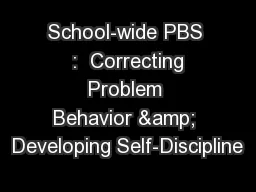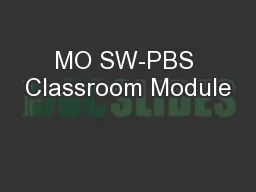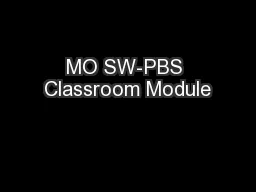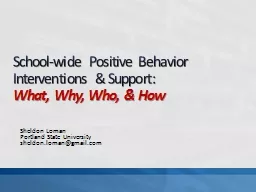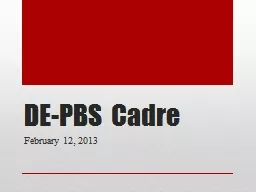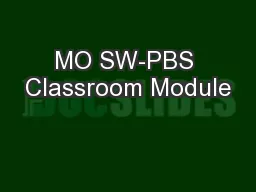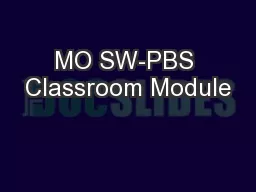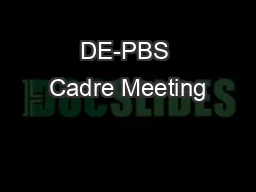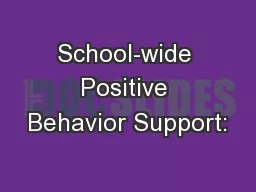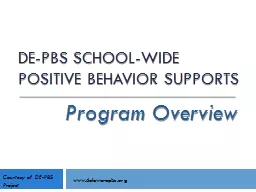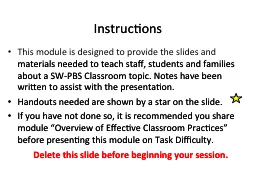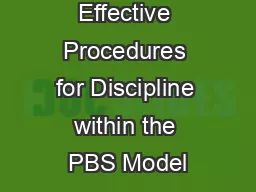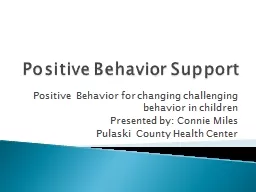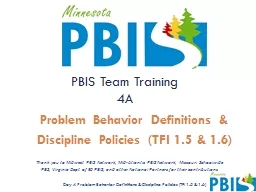PPT-School-wide PBS : Correcting Problem Behavior & Developing Self-Discipline
Author : jane-oiler | Published Date : 2018-09-21
December 8 2016 DEPBS MTSS Framework Components Program Development amp Evaluation ProblemSolvingLeadership Team Data Professional Development amp Resources Developing
Presentation Embed Code
Download Presentation
Download Presentation The PPT/PDF document "School-wide PBS : Correcting Problem B..." is the property of its rightful owner. Permission is granted to download and print the materials on this website for personal, non-commercial use only, and to display it on your personal computer provided you do not modify the materials and that you retain all copyright notices contained in the materials. By downloading content from our website, you accept the terms of this agreement.
School-wide PBS : Correcting Problem Behavior & Developing Self-Discipline: Transcript
Download Rules Of Document
"School-wide PBS : Correcting Problem Behavior & Developing Self-Discipline"The content belongs to its owner. You may download and print it for personal use, without modification, and keep all copyright notices. By downloading, you agree to these terms.
Related Documents

